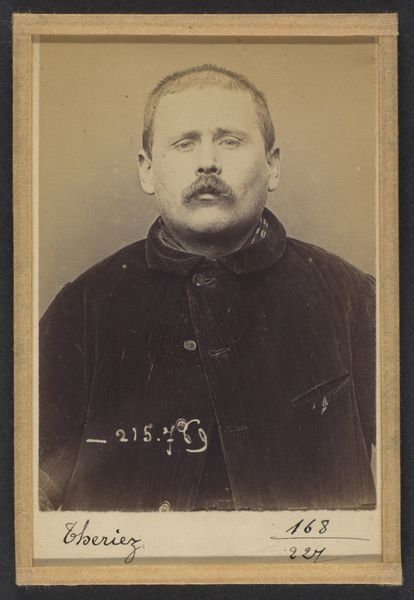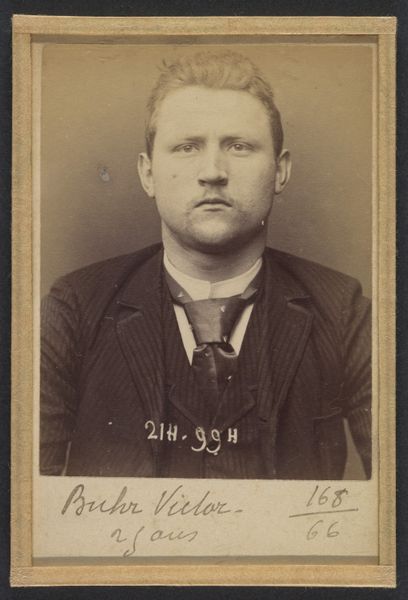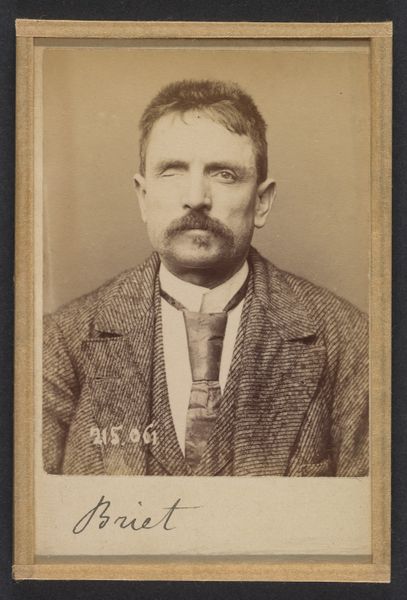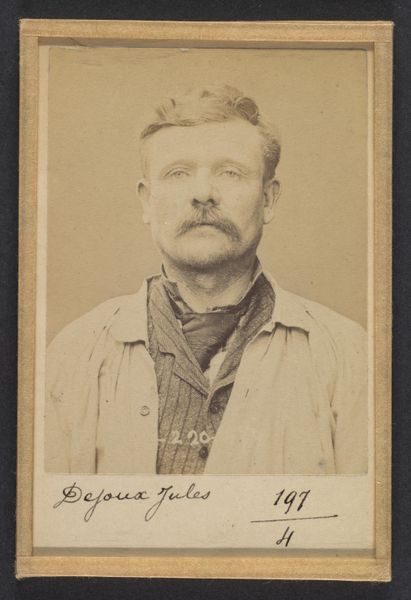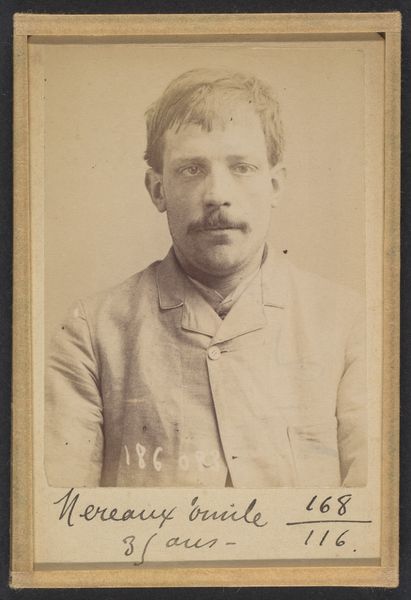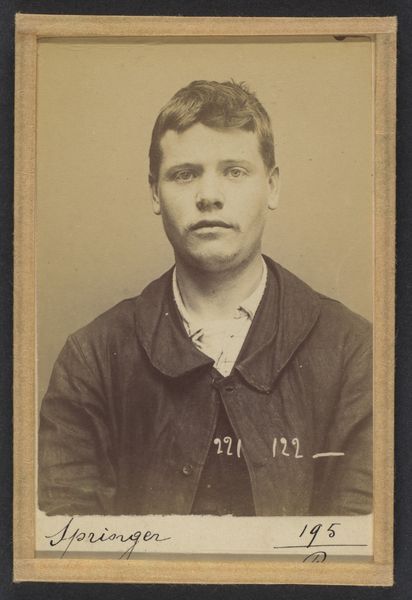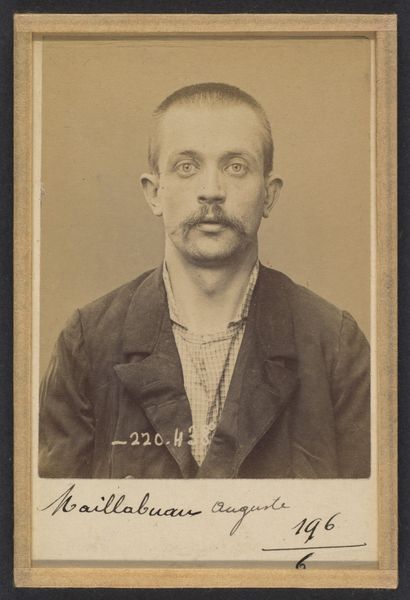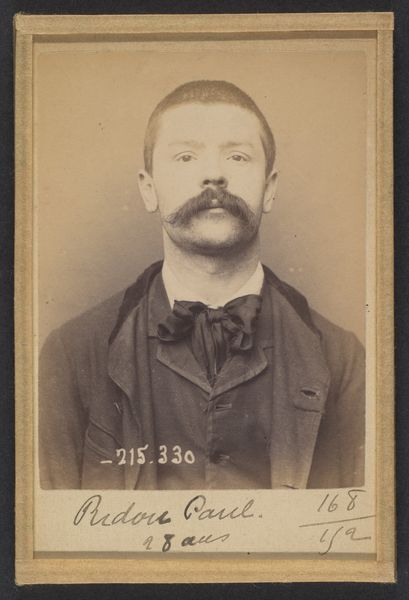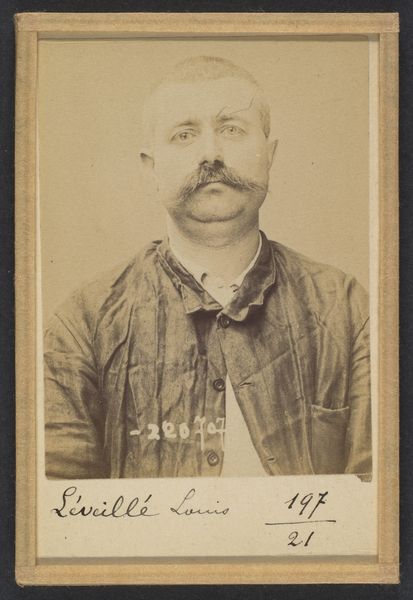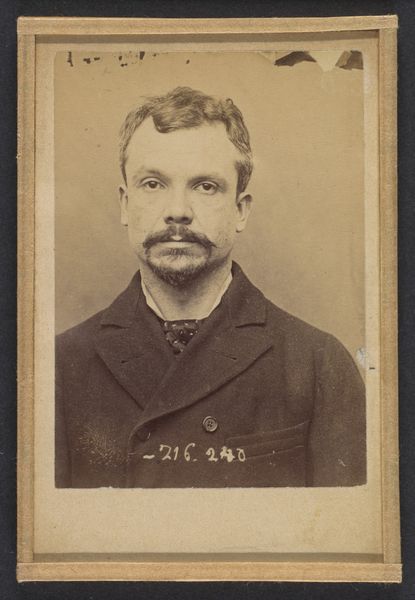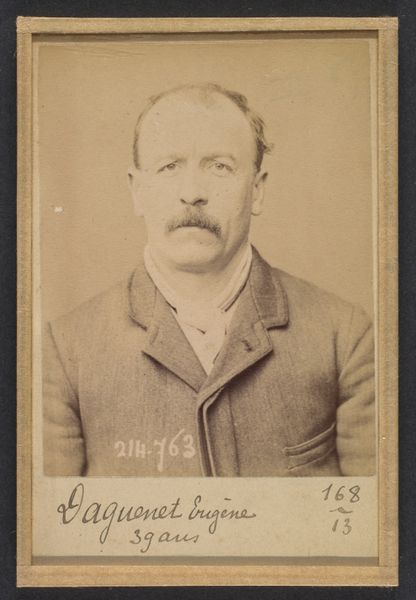
Raboin. Paul, Pierre, Augustin. 32 ans, né à Ouzoir-sur-Loire (Loiret). Journalier. Anarchiste. 23/4/92. 1892
0:00
0:00
print, photography, photomontage
#
portrait
# print
#
photography
#
historical photography
#
photomontage
#
academic-art
Dimensions: 10.5 x 7 x 0.5 cm (4 1/8 x 2 3/4 x 3/16 in.) each
Copyright: Public Domain
Curator: Here we have an albumen print photomontage created around 1892 by Alphonse Bertillon. It is entitled, "Raboin. Paul, Pierre, Augustin. 32 ans, né à Ouzoir-sur-Loire (Loiret). Journalier. Anarchiste. 23/4/92." Editor: Even without knowing anything about the sitter, there’s an immediate feeling of…resignation in this portrait. The plainness of the backdrop emphasizes his worn jacket and the almost pleading look in his eyes. Curator: It is certainly striking, how Bertillon managed to capture what seems like a profound sadness. As a formal construction, notice the use of shadow – how it sculpts the face, emphasizing bone structure while softening the direct gaze. There is an undeniable intimacy, achieved through carefully controlled tonal contrasts. Editor: Intimacy born of the judicial process, though. This is, at its core, a mugshot. The face of anarchy at the close of the 19th century. Note the slightly disheveled collar. Even then, the detail of the clothing—the soft corduroy— speaks volumes about social status, aspirations, and a subtle form of rebellion. The casualness is telling. Curator: You touch on an important point. While this functions as a documentary record for law enforcement, the arrangement transcends mere record-keeping. The slightly off-center placement, the framing, it pushes against the purely utilitarian and hints at artistry. Even the notations at the bottom – identifiers and codes – have a compositional weight, a semiotic value within the frame. Editor: Precisely! Anarchy, at that moment, in that place, threatened order and power. Looking at it now, does it? The banality of the photograph undermines any presumed terror, reducing him to a single moment captured for a file somewhere. The subversiveness seems almost pathetic, if not for that faint glimmer of defiance. I also sense the melancholy inherent in archival processes; all these forgotten faces… Curator: Yes, the composition certainly invites deeper readings. I find myself reflecting on how photography is used as a means of control versus expression. Thank you, your insightful analysis provided a lot to consider. Editor: Thank you; thinking about visual codes makes us all better communicators, even across a century.
Comments
No comments
Be the first to comment and join the conversation on the ultimate creative platform.
